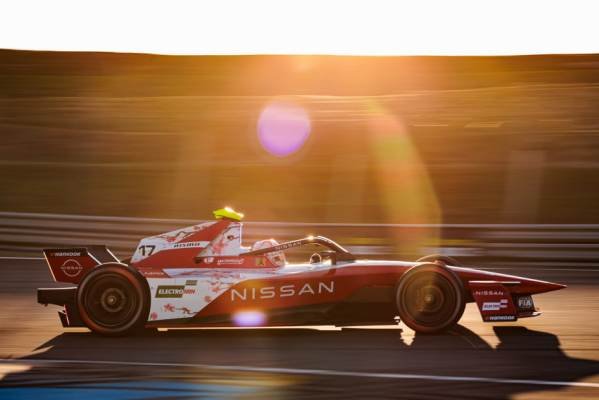ทีม Nissan Formula E ของนิสสัน สร้างผลงานอันโดดเด่นตลอดการแข่งขัน ABB FIA Formula E World Championship ฤดูกาล 2024/2025 ด้วยการขึ้นนำคะแนนสะสมสูงสุดในทั้งสามประเภท ทั้งแบบทีม, นักขับ และผู้ผลิต นับเป็นความสำเร็จที่สะท้อนให้เห็นถึงการเดินทางอันยาวนานที่นำพาทีมมาถึงจุดนี้ ผ่านการพัฒนาที่ไม่หยุดยั้ง และความมุ่งมั่นที่จะผลักดันขอบเขตของการแข่งขันรถยนต์ไฟฟ้าให้ก้าวไปข้างหน้า โดยล่าสุด หลังผ่านไปแล้ว 11 สนาม ทีม Nissan Formula E ยังคงรั้งตำแหน่งผู้นำสูงสุดของตารางการแข่งขันอย่างต่อเนื่อง
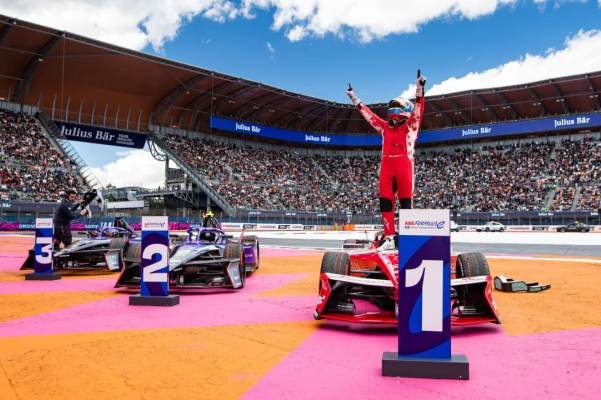
การเดินทางของทีม Nissan Formula E
Nissan เริ่มต้นเส้นทางแห่งการขับเคลื่อนพลังงานสะอาดในสนามแข่ง ด้วยการเข้าร่วมการแข่งขัน ABB FIA Formula E Championship อย่างเป็นทางการในฤดูกาลที่ 5 (2018/19) กลายเป็นผู้ผลิตรถยนต์จากญี่ปุ่นรายแรกและรายเดียวในรายการนี้ นับแต่นั้นเป็นต้นมา ทีม Nissan Formula E เดินหน้าพัฒนาทั้งสมรรถนะของรถและกลยุทธ์การแข่งขันอย่างต่อเนื่อง โดยในฤดูกาลล่าสุด 2024/2025 ทีมนำโดย โอลิเวอร์ โรว์แลนด์ และนอร์แมน นาโต ทำผลงานได้อย่างยอดเยี่ยม คว้าชัยชนะมาแล้วถึง 4 สนาม และเป็นทีมเดียวที่สามารถขึ้นโพเดียมได้ในทุกสนามตั้งแต่เริ่มฤดูกาล
ผลงานอันโดดเด่นยิ่งได้รับการตอกย้ำในสนามที่ 9 ณ Tokyo E-Prix เป็นสนามเหย้าของนิสสัน ทีมสามารถคว้าชัยชนะ โพเดียม และดับเบิลโพลโพซิชันได้สำเร็จ พร้อมก้าวขึ้นเป็นผู้นำคะแนนสะสมสูงสุดในทั้งสามประเภท ได้แก่ ประเภททีม นักขับ และผู้ผลิต การแข่งขัน Formula E สำหรับนิสสันจึงไม่ใช่แค่เวทีโชว์สมรรถนะ แต่คือ “สนามทดสอบอนาคต” ที่สะท้อนจิตวิญญาณ “Dare to do what others don’t” กล้าที่จะคิดต่างและลงมือทำเพื่อผลักดันนวัตกรรม ทั้งในด้านเทคโนโลยี มอเตอร์สปอร์ต และการพัฒนารถยนต์พลังงานไฟฟ้าภายใต้แผนวิสัยทัศน์ระยะยาว Nissan Ambition 2030 โดยนิสสันยังเป็นผู้ผลิตรายแรกที่ประกาศเข้าร่วมการแข่งขันในยุค GEN4 อย่างเป็นทางการจนถึงปี 2030 ตอกย้ำบทบาทผู้นำในโลกของ EV และระบบขับเคลื่อน e-POWER อย่างแท้จริง
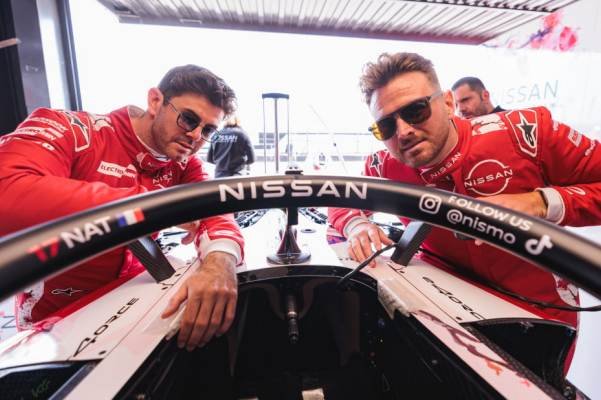
Formula E: ห้องทดลองของนวัตกรรมยานยนต์ไฟฟ้า
การแข่งขัน Formula E คือสนามทดลองที่ท้าทายและไร้ข้อจำกัดที่สุดสำหรับการพัฒนาเทคโนโลยีรถยนต์ไฟฟ้า Nissan ใช้เวทีนี้ในการทดสอบขีดความสามารถของระบบมอเตอร์ การจัดการพลังงาน และการควบคุมความร้อนในระดับที่ไม่สามารถทำได้ในการใช้งานทั่วไป โดยเฉพาะอย่างยิ่ง ในยุค ของรถแข่ง รุ่นที่ 3 (GEN3) ที่ทุกทีมใช้แบตเตอรี่ร่วมกัน การบริหารพลังงานอย่างแม่นยำจึงกลายเป็นปัจจัยสำคัญในการตัดสินชัยชนะ ซึ่งนิสสันมีจุดแข็งจากประสบการณ์ด้านขุมพลังแบบไฟฟ้ามายาวนาน ผสานกับข้อมูลจากการใช้งานจริงของผู้ใช้ Nissan LEAF ทั่วโลกที่รวมระยะทางกว่า 16 พันล้านกิโลเมตร ถูกนำมาใช้ในการออกแบบและพัฒนารถแข่งของทีม
ในทางกลับกัน ข้อมูลจากสนามแข่ง ทั้งด้านประสิทธิภาพของระบบฟื้นฟูพลังงานจากการเบรก หรือ regenerative braking การตอบสนองของมอเตอร์ และการกระจายแรงเบรก จะถูกส่งต่อไปยังทีมวิศวกรรมเพื่อพัฒนานวัตกรรมในรถยนต์ไฟฟ้ารุ่นใหม่ และ e-POWER ขณะเดียวกันนิสสัน ยังได้ลงทุนสร้างสำนักงานใหญ่ใหม่ของทีม Formula E ทางตอนใต้ของกรุงปารีส พร้อมสิ่งอำนวยความสะดวกครบวงจร ซึ่งช่วยยกระดับการวิจัยและพัฒนาตลอดทั้งกระบวนการ จากสนามแข่งสู่ท้องถนนอย่างแท้จริง

ข้อมูลคือหัวใจของความก้าวหน้า
ในโลกที่ข้อมูลคือขุมพลัง และทุกการตัดสินใจต้องอิงจากข้อมูลที่แม่นยำ ทีม Nissan Formula E จึงได้นำระบบ real-time telemetry มาใช้เพื่อวิเคราะห์รายละเอียดการแข่งขันในทุกๆ สนาม ซึ่งเปรียบเสมือน “สายตาและสติปัญญา” ของทั้งทีมวิศวกรรมและนักแข่ง ที่สามารถส่งข้อมูลจากตัวรถแข่งมากกว่า 1,000 จุดต่อรอบสู่ศูนย์ควบคุมได้แบบเรียลไทม์ โดยข้อมูลเหล่านี้ครอบคลุมทั้งอุณหภูมิแบตเตอรี่ อัตราการใช้พลังงาน ระบบ regenerative braking การกระจายแรงเบรก น้ำหนักที่ถ่ายสู่ในแต่ละล้อ ไปจนถึงการตอบสนองของช่วงล่างและยางในแต่ละจังหวะของสนาม
สิ่งที่ทำให้ระบบ telemetry ของ Formula E มีความพิเศษคือ ความละเอียดและความรวดเร็วในการประมวลผล ซึ่งช่วยให้ทีมสามารถ “มองเห็น” ทุกการตอบสนองของรถได้ในขณะที่นักแข่งยังอยู่บนแทร็ค ไม่ว่าจะเป็นการปรับกลยุทธ์ระหว่างรอบ การ fine-tune พลังงานแบบเสี้ยววินาที ไปจนถึงการตัดสินใจเรื่องการใช้ Attack Mode หรือพลังงานสำรอง โดยทั้งหมดเกิดขึ้นภายใต้ข้อจำกัดของพลังงานที่มีอยู่อย่างจำกัดในแต่ละสนาม

Cristina Mañas Fernández หัวหน้าฝ่าย Performance and Simulation ของทีม Nissan Formula E อธิบายว่า “การที่เรามีระบบ telemetry ที่แม่นยำ ช่วยให้วิศวกรสามารถเชื่อมโยงข้อมูลจากเครื่องยนต์กับฟีดแบคจากนักแข่งได้ทันที ซึ่งเป็นกุญแจสำคัญในการตัดสินใจว่า รถควรถูกปรับค่าการขับขี่อย่างไรในรอบถัดไป เพื่อดึงสมรรถนะให้ถึงขีดสูงสุดโดยไม่สูญเสียความสมดุล
จากสนามแข่งสู่ศูนย์การวิจัยและพัฒนา
การร่วมแข่งขันใน Formula E ไม่ได้เป็นเพียงพื้นที่ทดสอบเทคโนโลยีใหม่ ๆ เท่านั้น แต่ยังเป็นช่องทางสำคัญในการถ่ายทอดองค์ความรู้ระหว่างทีมมอเตอร์สปอร์ตและศูนย์วิจัยและพัฒนาของนิสสันในญี่ปุ่นอย่างเป็นระบบ โดยเฉพาะในยุคยานยนต์ที่ 3 (GEN3) ที่ Nissan ได้เข้าควบคุมทีมแข่ง Formula E อย่างเต็มตัว และแต่งตั้งทาดาชิ นิชิคาวะ (Tadashi Nishikawa) วิศวกรผู้มีประสบการณ์กว่า 20 ปีจากฝั่งยานยนต์ ขึ้นเป็น Chief Powertrain Engineer เพื่อเชื่อมโยงองค์ความรู้ระหว่างสองโลกเข้าด้วยกันอย่างมีประสิทธิภาพ
หนึ่งในผลลัพธ์สำคัญของกระบวนการนี้คือการพัฒนา ระบบขับเคลื่อน Nissan e-4ORCE 05 ที่ต่อยอดจากเทคโนโลยี e-4ORCE ในรถยนต์รุ่นเรือธงของแบรนด์ โดยถูกออกแบบให้มีความสามารถในการจัดการแรงบิดและพลังงานได้อย่างแม่นยำ รองรับการแข่งขันที่ต้องอาศัยความสมดุลและความเร็วในระดับสูง ซึ่งกลายเป็นปัจจัยสำคัญที่ช่วยให้ทีมนิสสันมีคะแนนขึ้นนำทั้งสามประเภทในฤดูกาลล่าสุด และตอกย้ำว่าเทคโนโลยีจากสนามแข่งสามารถต่อยอดสู่อนาคตของรถยนต์ไฟฟ้าบนท้องถนนได้อย่างแท้จริง

Formula E กับบทพิสูจน์วิสัยทัศน์ Ambition 2030 ของนิสสัน
การเข้าร่วมการแข่งขัน Formula E คือหนึ่งในกลยุทธ์สำคัญที่นิสสันใช้ในการขับเคลื่อนวิสัยทัศน์ Ambition 2030 ให้เป็นรูปธรรม วิสัยทัศน์นี้มุ่งสร้างโลกที่ปลอดมลพิษ ปลอดอุบัติเหตุ และขับเคลื่อนด้วยพลังงานไฟฟ้าอย่างทั่วถึง ไม่ใช่แค่การพัฒนาเทคโนโลยี แต่รวมถึงการปรับโครงสร้างความคิดและระบบนิเวศยานยนต์ทั้งระบบ
ภายใต้แรงกดดันและสภาพแวดล้อมสุดท้าทาย นิสสันมุ่งมั่นที่จะใช้เวทีนี้ในการพัฒนาโซลูชันที่สามารถต่อยอดสู่รถยนต์พลังงานไฟฟ้าเชิงพาณิชย์ โดยตั้งเป้าเปิดตัวรถยนต์ไฟฟ้า และ e-POWER ทั่วโลกรวมกว่า 20 รุ่นภายในปีงบประมาณ 2569 และตั้งยอดขายรถยนต์พลังงานไฟฟ้าทั่วโลกราว 50% ภายในปี 2573
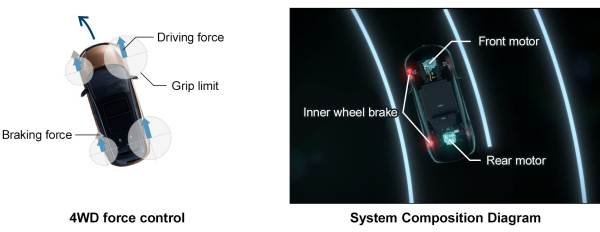
นิสสันยังต้องการวางรากฐานสู่อนาคตด้วยเทคโนโลยี แบตเตอรี่แบบ All-Solid State (ASSB) ซึ่งจะเริ่มนำมาใช้จริงภายในปีงบประมาณ 2571 และจะเป็นหนึ่งในจุดเปลี่ยนสำคัญของอุตสาหกรรม EV โดยเฉพาะในตลาดเกิดใหม่อย่างเอเชียตะวันออกเฉียงใต้ ซึ่งรวมถึงประเทศไทย ที่การใช้ EV ยังอยู่ในช่วงเริ่มต้นและต้องอาศัยเทคโนโลยีที่ประหยัด คุ้มค่า และใช้งานง่าย
เส้นทาง Formula E ของนิสสันจึงไม่ได้สะท้อนแค่ชัยชนะในสนามแข่ง แต่คือ ตัวเร่งการเชื่อมต่อของระบบ หรือ system accelerator ที่เชื่อมต่อระหว่าง “สนามแข่ง – ห้องวิจัย – สายการผลิต – และสังคม” ที่เดินหน้าด้วยจิตวิญญาณของ “Dare to do what others don’t” ความกล้าท้าทายกรอบเดิม ๆ และสร้างสรรค์สิ่งใหม่อย่างมีเป้าหมาย ทุกการแข่งขันจึงไม่ใช่เพียงจุดหมาย แต่คือก้าวย่างที่ตอกย้ำว่านิสสันพร้อมจะนำพาอุตสาหกรรมยานยนต์ไปสู่อนาคตที่ฉลาด สะอาด และยั่งยืนกว่าที่เคย
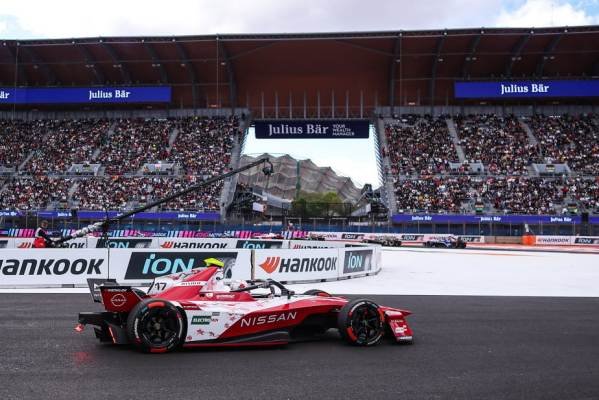
From Race Track to Tomorrow: Nissan’s Formula E Journey and Its Mission to Drive the Future of Mobility
Nissan’s Formula E Team has delivered outstanding performances throughout the 2024/25 ABB FIA Formula E World Championship season, leading the standings in all three categories: Teams, Drivers, and Manufacturers. This remarkable success reflects the team’s long journey of continuous development and unwavering commitment to pushing the boundaries of electric racing forward. As of now, after 11 races, Nissan continues to hold the top position in the championship standings.
Nissan Journey in Formula E
Nissan began its journey into electric motorsport with its official entry into the ABB FIA Formula E World Championship in Season 5 (2018/19), becoming the first and only Japanese automaker in the series. Since then, the Nissan Formula E Team has continuously improved its race performance and strategy. In the current 2024/25 season, led by Oliver Rowland and Norman Nato, the team has delivered outstanding results with four victories and remains the only team to secure podium finishes at every race so far.

This remarkable performance was most vividly demonstrated at Round 9 of the Tokyo E-Prix, Nissan’s home race, where the team secured a win, a podium finish, and a double pole position, propelling them to the top of the standings in all three categories: Teams, Drivers, and Manufacturers.
For Nissan, Formula E is far more than a racing stage — it’s a proving ground for the future and a reflection of the company’s philosophy, “Dare to do what others don’t.” It’s a commitment to bold innovation, spanning technology, motorsports, and the development of next-generation EVs under the long-term vision of Nissan Ambition 2030. Reinforcing this leadership, Nissan was also the first manufacturer to officially confirm its participation in the upcoming GEN4 era through 2030.
Formula E: A Live Laboratory for EV Innovation
Formula E presents one of the most demanding and unconstrained testing environments for electric vehicle technology. Nissan uses this platform to trial the limits of its electric motors, energy management systems, and thermal control which the challenges not easily replicated in conventional road testing. Strategic energy optimization becomes a key differentiator in the GEN3 era, where all teams use a standardized battery. Here, Nissan draws on its deep expertise in electric powertrains, backed by insights from more than 16 billion kilometers driven by LEAF owners worldwide, insights that help shape its racing technology.
In return, the team will transfer critical findings from the racetrack, such as regenerative braking performance, motor responsiveness and brake force distribution back to Nissan’s R&D division to accelerate the development of future EVs and e-POWER models. At the same time, Nissan has invested in a new Formula E team headquarters in southern Paris, equipped with state-of-the-art simulation labs, workshops, and engineering facilities. This setup streamlines the innovation pipeline from racetrack to road, ensuring real-world application of racing technologies.
Data: The Driving Force of Progress
In today’s high-stakes, data-driven racing world, Nissan Formula E relies heavily on real-time telemetry to inform every decision. Acting as the team’s eyes and brain, the system collects data from over 1,000 points on the racecar each lap including monitoring battery temperature, energy consumption, regenerative braking, brake balance, tire load, and suspension behavior in every stage of the track.
What sets Formula E’s telemetry apart is its combination of high speed and precision, giving engineers near-instant visibility into vehicle dynamics while the race is still ongoing. These insights are processed in real time, enabling engineers to adjust strategy on the fly, from energy fine-tuning and lap-by-lap performance analysis to decisions around Attack Mode and energy deployment.
As Cristina Mañas Fernández, Head of Performance and Simulation at Nissan Formula E, explains, “Having precise telemetry allows engineers to immediately correlate engine data with driver feedback, making it a critical tool in deciding how the car should be adjusted in the next lap to maximize performance without compromising balance.”
From the Racetrack to R&D
Formula E has become a vital bridge between motorsports and automotive R&D for Nissan. With full control of the team in the GEN3 era, Nissan strategically appointed Tadashi Nishikawa — a veteran engineer with over 20 years of experience — as Chief Powertrain Engineer to lead the knowledge transfer between the two worlds. One of the most tangible outcomes of this integration is the development of the Nissan e-4ORCE 05 powertrain. Derived from the e-4ORCE system found in Nissan’s flagship consumer EVs, this advanced power unit is designed for precision torque distribution and high-efficiency energy management under intense race conditions.
The e-4ORCE 05 system has become a cornerstone of the team’s success this season, playing a key role in securing Nissan’s lead across all three championship categories. More importantly, it exemplifies how racetrack innovation can directly influence and inspire the design of future EVs for everyday drivers.
Formula E and Its Nissan’s Ambition 2030
Nissan’s participation in Formula E is a key strategy in bringing its Ambition 2030 vision to life — a vision that aims to create a world with zero emissions, zero fatalities, and equitable access to electric mobility. This goes beyond developing cutting-edge technologies; it involves transforming mindsets and reshaping the entire automotive ecosystem.
In such a high-pressure and competitive environment, Nissan is committed to using Formula E as a platform to develop solutions that can be transferred into commercial EVs. The company plans to launch over 20 new EV and e-POWER models globally by fiscal year 2026, with a target of making 50% of its global sales from electrified vehicles by 2030.
Nissan is also laying the foundation for the future with its All-Solid-State Battery (ASSB) technology, which is expected to be deployed in real-world applications by fiscal year 2028. This innovation is set to become a major turning point in the EV industry — particularly in emerging markets such as Southeast Asia, including Thailand, where EV adoption is still in its early stages and requires solutions that are affordable, accessible, and easy to use.
Nissan’s Formula E journey is more than a pursuit of victories — it’s a system accelerator that connects the racetrack, the research lab, the factory, and society. It reflects the brand’s unwavering spirit to “Dare to do what others don’t,” breaking conventions to build a better future. Every lap, every data point, and every innovation reaffirm Nissan’s commitment to driving the automotive industry forward — toward a smarter, cleaner, and more sustainable tomorrow.








